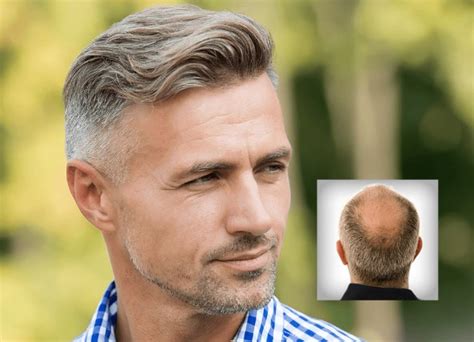What is a Hair System?
A hair system, also known as a non-surgical hair replacement, is a customized piece that provides coverage for thinning hair or baldness. It consists of a base material that is attached to the scalp and hair strands that are implanted into the base.

How It Works
Hair systems are designed to blend seamlessly with the existing hair. The base is made from breathable and durable materials that allow for scalp ventilation and scalp comfort. The hair strands are carefully selected to match the texture, color, and density of the natural hair.
Benefits of Hair Systems for Men
1. Natural-Looking Results
Hair systems provide a natural and undetectable appearance. They are designed to mimic the growth pattern and density of natural hair, giving the wearer a more youthful and confident look.
2. Non-Surgical and Non-Invasive
Unlike surgical hair transplants, hair systems are non-invasive and do not require any surgery or anesthesia.
3. Adjustable and Customizable
Hair systems can be customized to fit the individual’s needs and preferences. They can be adjusted to provide different levels of coverage and styles, such as shorter or longer hair, bangs, or sideburns.
Types of Hair Systems
There are several types of hair systems available, each with its own advantages and drawbacks:
| Type | Material | Pros | Cons |
|---|---|---|---|
| Lace Hair Systems | Lace | Breathable, natural appearance | More delicate, requires more maintenance |
| Skin Hair Systems | PU membrane | Durable, can create a closer bond with the scalp | Less breathable, less natural appearance |
| Mono Hair Systems | Monofilament | Transparent, allows scalp to show through | Less durable, may show mesh lines |
| Combination Hair Systems | Combination of lace and skin or mono | Combines the advantages of different materials | More expensive, can be heavier |
Choosing the Right Hair System
Selecting the most suitable hair system involves considering several factors:
- Hair Loss Pattern: The extent and pattern of hair loss will determine the type and size of hair system needed.
- Scalp Sensitivity: The sensitivity of the scalp may influence the choice of base material.
- Lifestyle: Active lifestyles may require a more durable system, while sedentary lifestyles may allow for a more delicate one.
- Budget: Hair systems vary in price depending on factors such as materials, size, and customization.
How to Apply and Maintain a Hair System
Applying and maintaining a hair system requires proper techniques to ensure its longevity and appearance.
Application:
- Prepare the scalp by washing and gently exfoliating it.
- Adhere the hair system to the scalp using the recommended adhesive.
- Style the hair as desired.
Maintenance:
- Clean the hair system regularly using specialized shampoos and conditioners.
- Avoid exposing it to excessive heat or chemicals.
- Get regular trims and touch-ups to maintain its shape and appearance.
Tips and Tricks for Success
- Choose a reputable hair system provider with a proven track record.
- Consult with a hair loss specialist or stylist to determine the most suitable option.
- Be patient and realistic with your expectations. Hair systems can offer natural-looking results, but they require maintenance and care.
- Experiment with different hairstyles and products to find what works best for you.
- Embrace your new look with confidence and enjoy the benefits of a fuller head of hair.
FAQs
1. Are hair systems permanent?
No, hair systems are not permanent. They are typically worn for 2-4 months before requiring maintenance or replacement.
2. How much do hair systems cost?
The cost of hair systems varies depending on factors such as materials, size, and customization. Prices typically range from a few hundred to several thousand dollars.
3. Are hair systems covered by insurance?
In some cases, insurance may provide coverage for hair systems that are deemed medically necessary. It is recommended to check with your insurance provider to confirm eligibility.
4. How long do hair systems last?
With proper maintenance, a hair system can last for 6-12 months. Factors such as lifestyle and care habits can affect its longevity.
5. What are the risks associated with hair systems?
Hair systems are generally safe and well-tolerated, but there are some potential risks to consider:
- Allergic reactions to adhesives
- Scalp irritation or infections
- Damage to natural hair
6. How do I choose the right hair system for my needs?
Consult with a hair loss specialist or stylist to discuss your individual needs and preferences. Consider factors such as hair loss pattern, scalp sensitivity, lifestyle, and budget.
Conclusion
Hair systems for men offer a non-surgical and effective solution for hair loss. By providing natural-looking coverage and customizable options, they can restore confidence and rejuvenate one’s appearance. With proper care and maintenance, hair systems can significantly enhance the quality of life for individuals experiencing hair loss.
